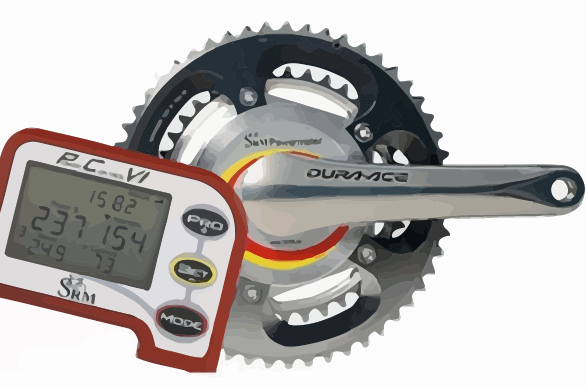Calculating Your Optimum Cycling Cadence
Eventually every cyclist starts to think about their cadence and what it the ideal number should be. Many experienced riders will tell you to ride with a high cadence and that the higher the better. But even if you trust the advice, you might still be asking what it all means, why should you even worry about it, and should everyone ride at the same cadence?

Cadence refers to the revolutions per minute (RPM) of your legs as they're pedaling. Each time your foot performs one full revolution it is counted as 1 revolution e.g. your right foot starts at the top position and ends up again at the top position that's 1 revolution. So of your right leg completes 60 such revolutions in a minute then you are doing 60 RPM.
To explain why RPM matters, lets look at in the context of an automobile where the RPM is measurement of the rate at which the pistons move up and down. When the RPM is too low, it won't have any acceleration power. You've probably experienced this when merging onto a highway from a slow speed or even stopped. When the RPM is too high you typically hear the engine revving much higher than feels normal and this results in excessive fuel use. Both conditions, too low or too high, result in an inefficient use of the engine and therefore poor power output. For every desired speed, there's an optimal RPM.
The situation for cyclists is similar. If your RPM is too low you will struggle to rotate the pedals and therefore struggle to move forward. If the RPM is too high your legs will be spinning too fast and you will be wasting energy, in addition to bouncing up and down in your seat.
When you are at your optimum cadence, or RPM, you will be able to cycle at the maximum speed without overtiring your legs allowing you to ride for extended periods of time. The healthier you are, the higher your speed will be even though your cadence may be the same as someone moving at a slower speed.
Here's another analogy to help illustrate. Suppose you need to transfer 300 bricks a distance of one kilometer with a wheelbarrow. If you try to take the 300 bricks at once you will not be able to do it as the load would be too heavy. On the other hand, if you put only 1 brick in the wheelbarrow it will be very easy to push, but you will need to repeat the distance 300 times, which will take a very long time. Neither option is efficient. Instead, some number of bricks will represent what you can lift while also reducing the number of trips to the minimum. And, of course, different people will be able to lift different amounts.
Before we continue realize that your optimum cadence will change depending on how you feel that day, your fitness level, whether you're climbing, head winds, the distance you're riding that day, etc. In order to calculate your optimum cadence with objectivity you'll need clipless pedals and shoes along with an odometer that shows your cadence. You will also need a heart rate monitor.
If you want to go one step further you can also use a power meter (similar to the one shown above). A power meter is a high-end device used to measure how much force, in wattage, you are exerting while pedaling. This device is part of the crank arm and crankset. Its primary purpose is to give constant feedback to the rider, in terms of power exerted, so they can better pace themselves.
How to Determine Your Optimal Cadence
- Find a route that is about 10 miles (15 km) long, preferably a flat route with no traffic lights or other obstacles that will slow you down. A 10 mile (15 km) ride is long enough to ensure that if you are pedaling too hard you will not be able to keep it up for very long because of lactic acid build up.
- Now ride this route pedaling at different RPM e.g. start at 60 RPM and move up in increments of 10 RPM until you reach 120 RPM. You should probably not do all of these on the same day as fatigue may skew results.
- You'll also need to pick a gear since maintaining the same RPM on different gears requires different levels of effort. You'll need to select a gear based on “feel” i.e. pick a gear that allows you to move at a good speed while not exhausting your legs. If you do get tired, lower the gear so you can maintain the RPM you started with.
- As you do these practice rides you should monitor your heart rate and the time it takes you to finish the distance.
- You can also monitor how you feel as you ride e.g. your perceived level of exertion.
- Your objective is to find out which cadence allows you to complete the route the quickest with the lowest average heart rate or the least perceived level of exertion.
- If you have a power meter use this as part of your calculation. See how much power you can produce with the minimal average heart rate for the distance.
A Few Tips
- Everyone is different, don't try to copy someone else's cadence.
- Going up hill will most likely require a higher cadence.
- Proper bike fit is vital for optimal cadence.
- Learn to ‘feel' the correct cadence for the specific riding conditions and don't just rely on numbers.
- Changing your bike may also affect your optimal cadence.
- It's better to start a ride with a higher cadence and then adjust accordingly. Starting with a low cadence can lead to premature fatigue.
If you're interested in learning about some experimentation around determining the best cadence, check out this video.



Leave a Reply